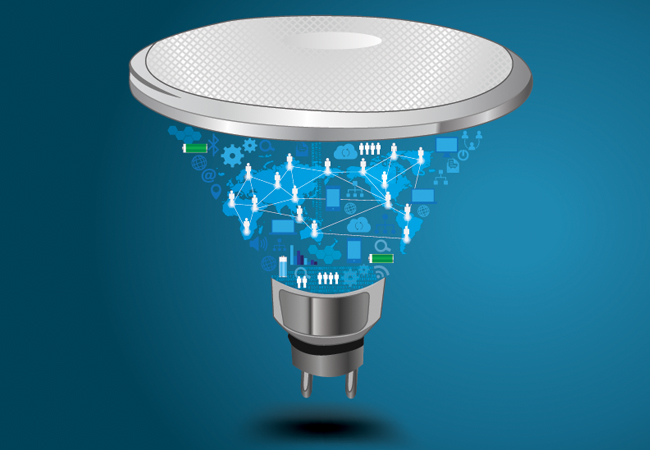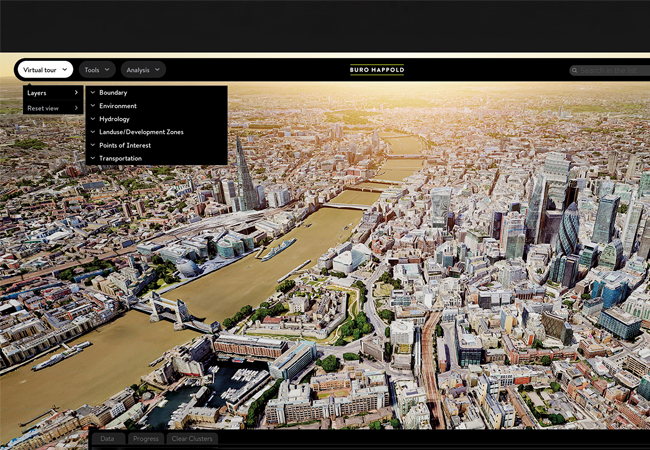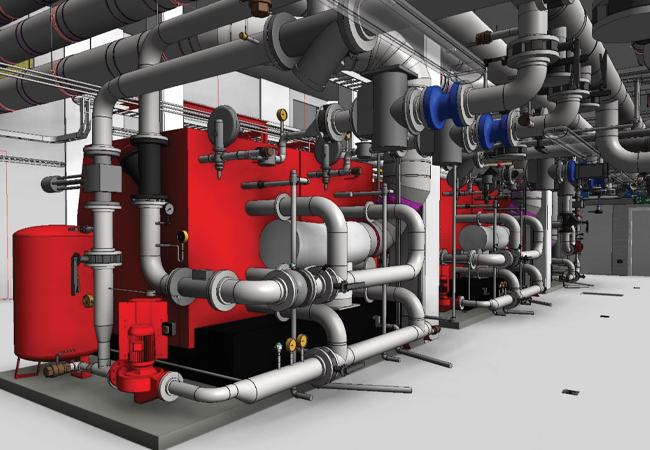
The recent ratification of the IEEE 802.11bb standard heralds a new era in the field of secure, reliable, high-speed wireless communication. Unlike its predecessors, this cutting-edge standard uses infrared light for data transmission (LiFi), moving away from visible light and making it a compelling companion to existing Wi-Fi systems.
Hailed by experts in the industry as a turning point for optical wireless communication, this change in medium offers a series of unprecedented advantages: high data speeds, aesthetic versatility, and the synergistic relationship with existing Wi-Fi networks.
For stakeholders in sensitive environments such as healthcare and financial sectors, the standard’s focus on security and bandwidth cannot be overstated. It means that construction, architecture and lighting design are poised for disruption.
What is LiFi?
LiFi (light fidelity) is a wireless communication technology. The term was first coined by Professor Harald Haas, of the University of Strathclyde, during a 2011 TEDGlobal talk in Edinburgh.
It is similar to Wi-Fi, as both transmit data electromagnetically, but where Wi-Fi uses radio waves, LiFi can transmit data at high speeds over the visible light (VL), ultraviolet and infrared spectra, specifically by modulating light intensity.
LiFi resolves a growing capacity issue with Wi-Fi – the VL spectrum alone is 10,000 times larger than the entire radio frequency spectrum, and offers higher speeds and greater security.
Why infrared light is a paradigm shift
The transition to infrared light is a calculated and transformative move. Its facility for faster data transmission enables LiFi to accommodate more complex and data-heavy tasks seamlessly.
In addition, infrared (IR) light, unlike visible light, is invisible to the human eye, making it significantly more versatile for various applications, including those where aesthetic integrity is vital. This characteristic is crucial in applications where the appearance and quality of lighting are important – for instance, in museums, art galleries, or high-end retail environments. In contrast, visible light-based LiFi might compromise the visual aesthetic because visible light would have to be switched on to transmit data.

The arrival of this standard has a range of implications for smart buildings. Lighting fixtures will soon serve a dual purpose: providing illumination and acting as data-transmission hubs. This development allows for the integration of IR emitters, which can be retrofitted into existing lighting systems. Consequently, the typically high costs associated with adopting new technologies could be reduced markedly, as built environments can adapt existing infrastructure to meet these new needs.
Moreover, the standard serves as a crucial reference point for vendors, ensuring the creation of globally standardised and interoperable products. Such standardisation is a milestone that could expedite the integration of LiFi across different built environments, from commercial spaces to residential buildings.
The introduction of the IEEE infrared standard for LiFi does not imply that visible light will cease to be used for LiFi. Rather, it expands the technology’s capabilities. Infrared and visible light have different properties and applications. For instance, infrared can be more suitable in situations where visible light communication might be distracting or not feasible (in darkened environments such as bedrooms or cinemas). ‘Visible light still has significant applications and advantages, such as its use in illuminated environments,’ says Van Gils. ‘The decision to use infrared or visible light – or even a combination of both – depends on the specific application and requirements of the LiFi system.’Visible vs infrared light
Transforming communication
Until recently, the primary means of transmission within smart buildings rested on Wi-Fi and wired connections. However, in situations where Wi-Fi signals are weak or disrupted because of structural barriers, LiFi can offer a reliable, secure alternative. This development is particularly relevant in settings that handle sensitive or confidential information, such as governmental buildings or healthcare facilities, where additional layers of security are necessary.
The typically high costs associated with adopting new technologies could be reduced markedly, as built environments can adapt existing infrastructure to meet these new needs
The IEEE 802.11bb standard furnishes professionals in the construction and design industry with a range of new tools and considerations. It lays out specific guidelines to ensure LiFi’s seamless integration with existing Wi-Fi networks, thereby simplifying the installation process and minimising costs. With its high data-transfer capabilities, IR LiFi is suitable for environments such as research laboratories or data centres, which regularly work with large datasets
New applications
The new standard broadens the horizon for diverse and creative applications. For example, in educational institutions, classrooms can become interactive learning environments, where data from smart devices, educational software, and even the internet can be streamed directly via the room’s lighting.
In industrial settings, production lines can be monitored and controlled through a secure, high-speed LiFi network, reducing the reliance on potentially vulnerable Wi-Fi networks.
In healthcare settings, real-time patient data can be reliably and securely transmitted to healthcare providers, offering immediate insights into patient conditions and allowing for swift medical intervention when necessary.
Future directions
As more vendors come on board, we can expect to see a decrease in the cost of implementation. Economies of scale could make LiFi a cost-effective solution, even for smaller-scale applications, such as homes and small businesses.
In addition, it opens the door to advancements in device-to-device communication. Smartphones, tablets and other personal devices with integrated LiFi could revolutionise the way we interact with the digital world.
The combination of IR LiFi and Wi-Fi also promises to optimise load distribution in network traffic. Future systems may automatically switch between LiFi and Wi-Fi to ensure the most efficient use of bandwidth, depending on real-time conditions. This feature could be a crucial step in the development of truly intelligent and adaptive smart buildings.
The ratification of the IEEE 802.11bb standard represents a shift in how we conceptualise and implement data communication technologies in built environments. Engineers, architects and lighting designers now have a broader array of resources at their disposal to create intelligent, connected and aesthetically pleasing spaces. Beyond merely being an innovative technology, the standard is a harbinger of the future, where lighting does more than illuminate our spaces – it connects us.
The IEEE 802.11bb standard was ratified by the Institute of Electrical and Electronics Engineers in June 2023. More details at: bit.ly/CJLiFIst
- Jeroen van Gils is the founder and managing director of LiFi.co, which promotes LiFi technology. He also heads Morex, a digital solutions enterprise.






